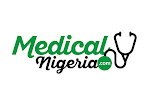According to World Health Organization (WHO). Standard
precautions are meant to reduce the risk of transmission of blood borne and
other pathogens from both recognized and unrecognized sources.
They are the basic
level of infection control precautions which are to be used as a minimum in the
care of all patients.
Hand hygiene is a
major component of standard precautions and one of the most effective methods
to prevent transmission of pathogens associated with healthcare.
In addition to hand
hygiene the use of personal protective equipment should be guided by risk
assessment and the extent of contact anticipated with blood and body fluids, or
pathogens.
In addition to
practices carried out by health workers when providing care, all individuals
(including patients
and visitors) should comply with infection control practices in health Care
settings.
The control of spread
of pathogens from the source is key to avoid transmission.
Among source control
measures, respiratory hygiene/cough etiquettes developed during the
severe/acute respiratory syndrome (SARS) outbreak, is now considered as part of
standard precautions.
DEFINITIONS OF TERMS
STANDARD: Standard
can be defined as something used as a measure or falling within an accepted
range.
PRECAUTIONS:
Precautions is a measure taken before hand to ward off (i.e prevent) evil or secure good or success.
STANDARD PRECAUTIONS:
Are group of infection prevention practice that apply to all patients and
residents , regardless of suspected or confirmed infection status, in any setting in which
health care is delivered . It include hand hygiene, cough etiquette, safe
injection practices, and use of
Mask for insertion of
catheters or injection of material into spinal or epidura space via lumber
puncture procedures.
Check list
(1) Hand
hygiene is a major component of standard precautions and one of the most
effective method to prevent transmission of pathogens associated with health
care.
(i)Perform hand
hygiene by means of hand rubbing with alcohol-based preparation.
(ii) Perform hand
washing with soap and water, if hand are visibly soiled, or exposure to spore-forming organisms proven
or strongly suspected, or after using the rest room, if resources permit,
perform hand rubbing with alcohol –based preparation.
(iii)Ensure
availability of hand washing facilities with clean running water
(iv)Ensure
availability of hand hygiene products (clean water, soap, single use clean
towels, alcohol-based hand rub)
(2) PERSONAL
PROTECTIVE EQUIPMENT (PPE)
Assess the risk of exposure of body substance
or contaminated surface before any health care activity. Make this a routine!
Then select PPE based on the assessment of risk.
The PPE include:
(i)Clean
Non-sterile gloves
(ii)Clean non
sterile fluid resistant gown.
(iii)Mask and
eye protection or a face shield
(3)RESPIRATORY
HYGIENE AND COUGH ETIQUETTE
(i)Education
of health workers, patients and visitors to cover mouth and nose when coughing
or sneezing.
(ii)Hand
hygiene after contact with respiratory secretions.
(iii)Spatial
separation of persons acute febrile respiratory systems.
(iv)Epidemic
or pandemic alert Response
HEALTH CARE FACILITY
RECOMMENDATION FOR STANDARD PRECAUTIONS
KEY ELEMENTS AT A GLANCE
(1)Hand
Hygiene.
Summary Techniques for hand washing;
(i)Hand
washing (40-60sec) Wet hands and apply soap, rub all surfaces , rinse hands
with a single use towel; use towel to turn off faucet.
(ii)Hand
rubbing (20-30secs): Apply enough product to cover all areas of the hands; rub
hand until its dry.
SUMMARY INDICATIONS
(i) Before
and after any direct patient contact and between patients, whether or not
gloves are worn.
(ii) Immediately
after gloves are removed
(iii) Before
handling an invasive device.
(iv) After
touching blood, body fluids, secretions, excretions, non-intact skin, and
contaminated items even if gloves are worn during patient care, when moving
from a contaminated to a clean body site of the patient
(v) After
contact with an inanimate objects in the immediate vicinity of the
patient.
(2) GLOVES
(i)Wear
gloves when touching blood, body fluids, secretions, mucous membrane,
non-intact skin.
(ii)Change
gloves between tasks and procedures on the same patient after contact with
potentially infectious materials .
(iii)Remove
glove after use before touching non-contaminated items and surfaces and before
going to another patient. Perform hand
hygiene immediately after removal.

Comments
Post a Comment
Premium, Professional CV Revamp and Rewrite services with a FREE Cover Letter from MedicalNigeria at #3,500! WhatsApp- 07038844295 to get Started!